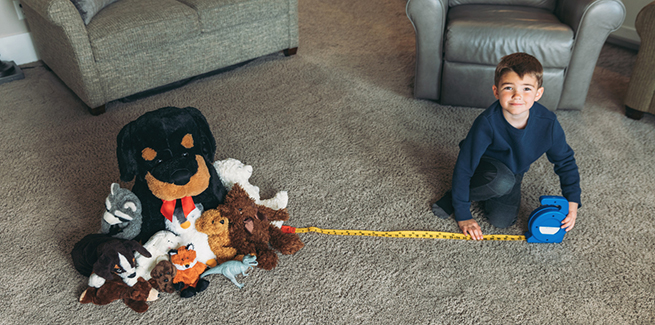Veterinary hospitals and social responsibility in the era of COVID-19: An interview with J. Scott Weese

For J. Scott Weese, DVM, DVSc, DACVIM, social distancing equals social responsibility. Inside the hospital and out.
Weese is an Associate Professor in the Department of Pathobiology at the University of Guelph (UG) in Ontario, Canada, and a contributing reviewer of the 2018 AAHA Infection Control, Prevention, and Biosecurity Guidelines.
If his name’s familiar, chances are you’ve seen it recently online. Weese spearheaded the design of a flow chart originally created to help triage cases—and reduce the risk of infection from pet owners—coming in to UG’s veterinary hospital. The chart proved popular, and it appears on a number of COVID-19 resource pages, including AAHA’s.
The original first appeared last week on Weese’s wonderful blog Worms and Germs, along with his detailed advice on social distancing in veterinary clinics.
Weese talked to NEWStat about the ongoing importance of social distancing, the tradeoff of wearing face masks, and how important it is that hospitals not let their guard down.
NEWStat: Was the flowchart something you came up with in response to the coronavirus or was it previously developed for general use at Guelph?
J. Scott Weese: That’s all in response to coronavirus. The original’s on the blog. It also went out through the Canadian Veterinary Medical Association.
NEWStat: How long have you been monitoring the coronavirus?
JSW: When it first appeared in China, we were paying attention to it, trying to fiigure out what the risks might be and what we need to be doing in an overall One Health approach to it. We’ve been working on it for a while.
NEWStat: Has anything about the virus changed since you first started paying attention?
JSW: It’s evolving a little bit, [but no] substantial changes. We’re still taking a risk-reduction approach in that we don’t know what the risks really are. The control measures are pretty practical. We’re trying to bring in a lot of basic steps to reduce any risk that might be there without bogging the system down by being too restrictive.
NEWStat: In the US, the Centers for Disease Control is rethinking the use of face masks for protection.
JSW: That’s been a big controversy for a while. Does routine mask use help? Masks are there to prevent you from aerosolizing if you’re infected [but] they’re not really designed to protect you. They’re more for the protection of people around you. The question is, should [hospital staff] be wearing them more routinely just in case we have a staff member who’s sick and we’re not aware of it? It comes down to [a question of] supply as well. Just because masks are getting in short order in some areas. It’s the cost benefit of using masks for that.
NEWStat: What’s your advice on wearing masks?
JSW: Right now, we’re keeping an eye on it. Part of it comes down to the epidemiology of the area. Where there are a lot of cases [of COVID-19], it’s more useful. Having more people wearing masks helps keeps them from being a source of infection. If the number of cases is low, then the positive effects drop a bit. There’s not a downside [to wearing masks] except for the consumption of masks. You have to think about what the benefits are and what the costs are. There’s going to be some degree of benefit; it might be small, and we don’t really know what it is. So how much does it cost to wear a mask? How much do we risk burning through our supplies? If we can’t get restocked for three months, which is a concern in some areas, we don’t want to go through our masks in the next couple weeks. We want to make sure we still have some in reserve.
NEWStat: Do you have any further advice on keeping safe for veterinary professionals?
JSW: The big thing is social distancing. That’s the biggest thing we can do by far. On the job and off the job. It’s a challenge on the job. That’s why we need to be really responsible off the job. It’s really critical that everyone in the clinic is doing a really good job [at social distancing] outside the clinic because they’re posing a risk to the rest of the staff. So we want to make sure that everyone is on board with the social distancing. Everyone’s doing a pretty good job with social distancing from clients. Everyone’s kind of jumped on that pretty well. The standards [have been] pretty widely adopted.
One of the issues is going to be [long-term] compliance. You get compliance for a short time, but [the pandemic] is going to go on for a while. So trying to figure out the balance between good veterinary care and making clinics viable is an ongoing challenge.
Check out Weese’s new video on social distancing in veterinary practices.
Photo Credit: iStock/RichVintage



